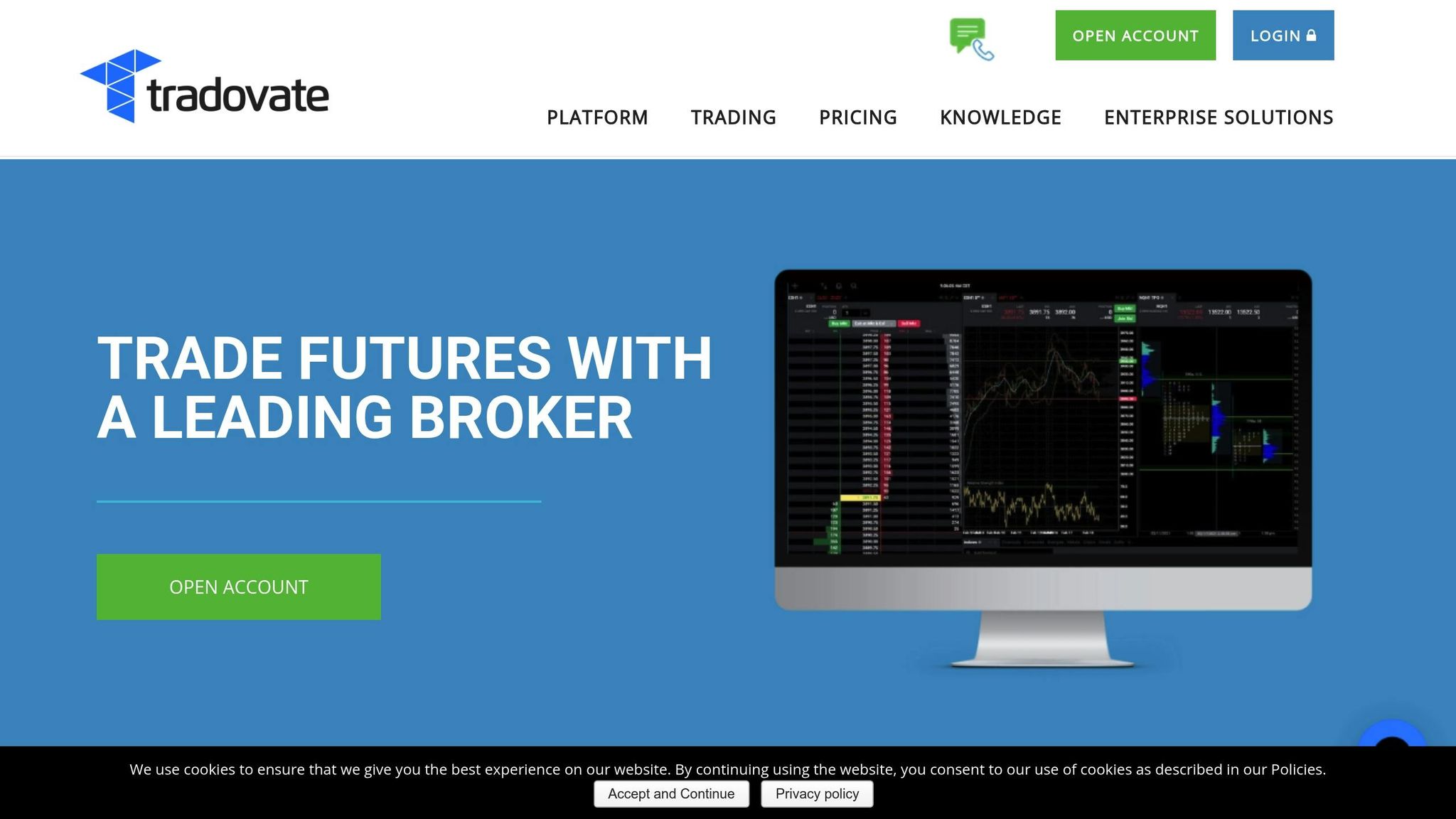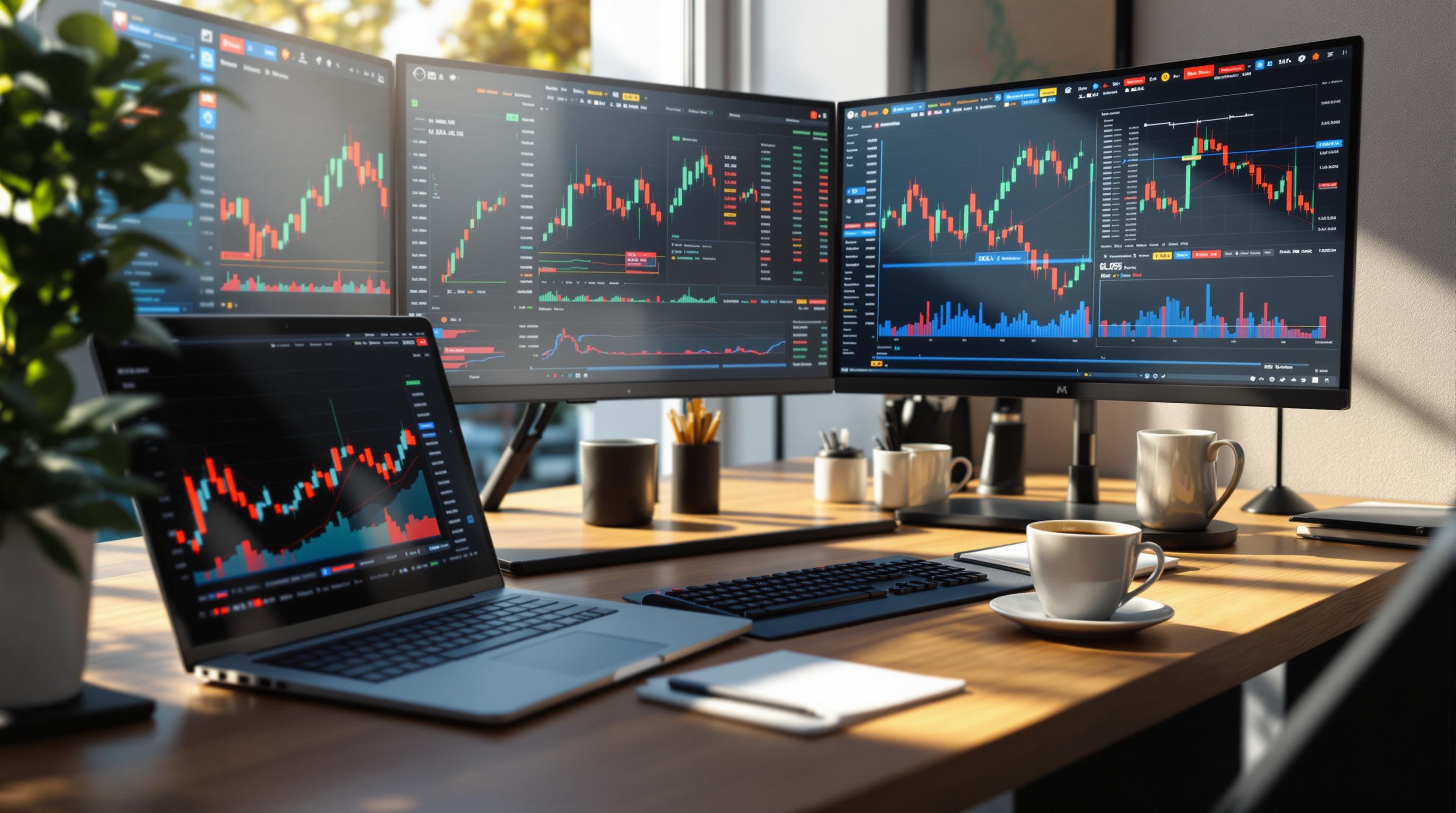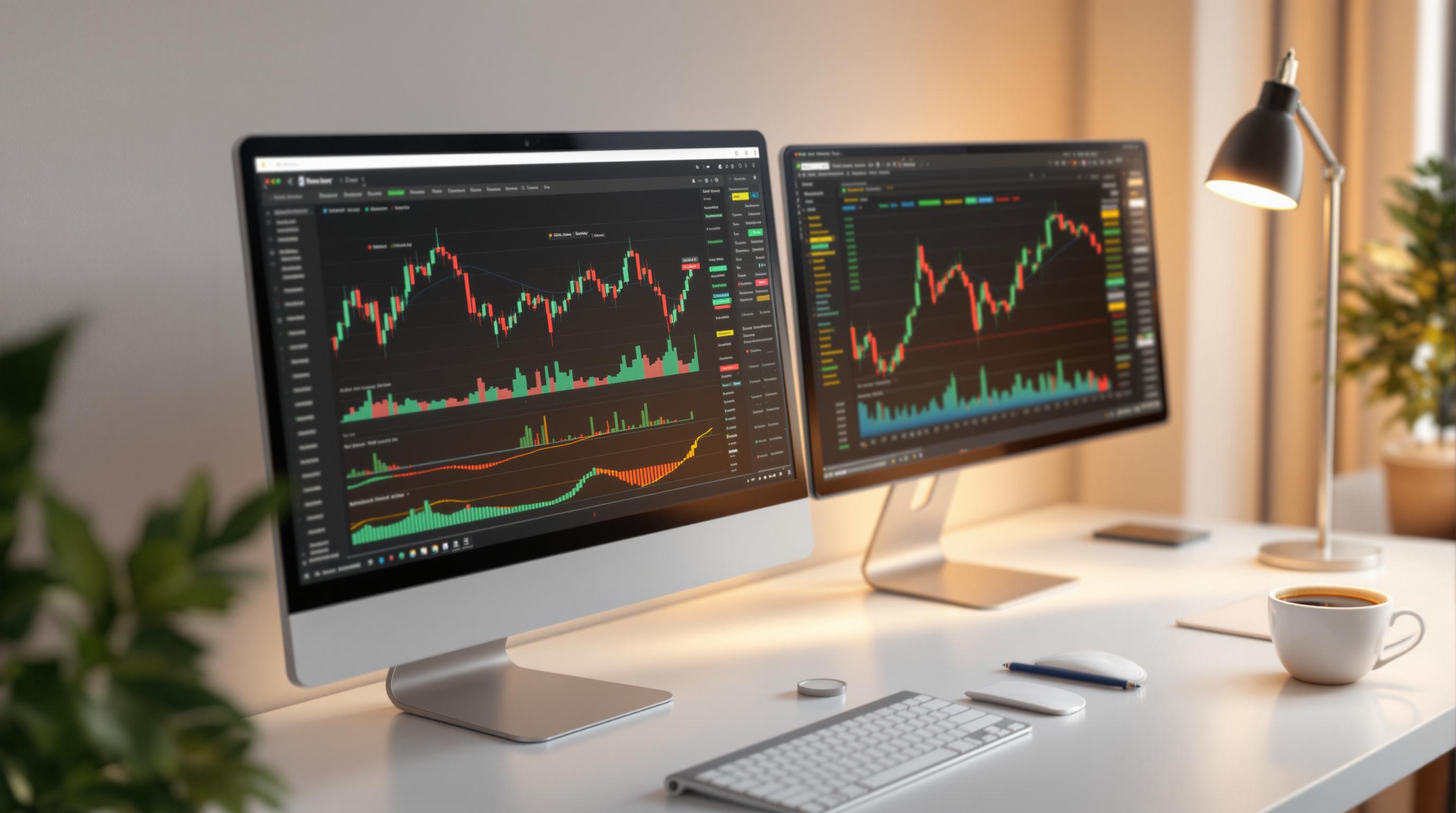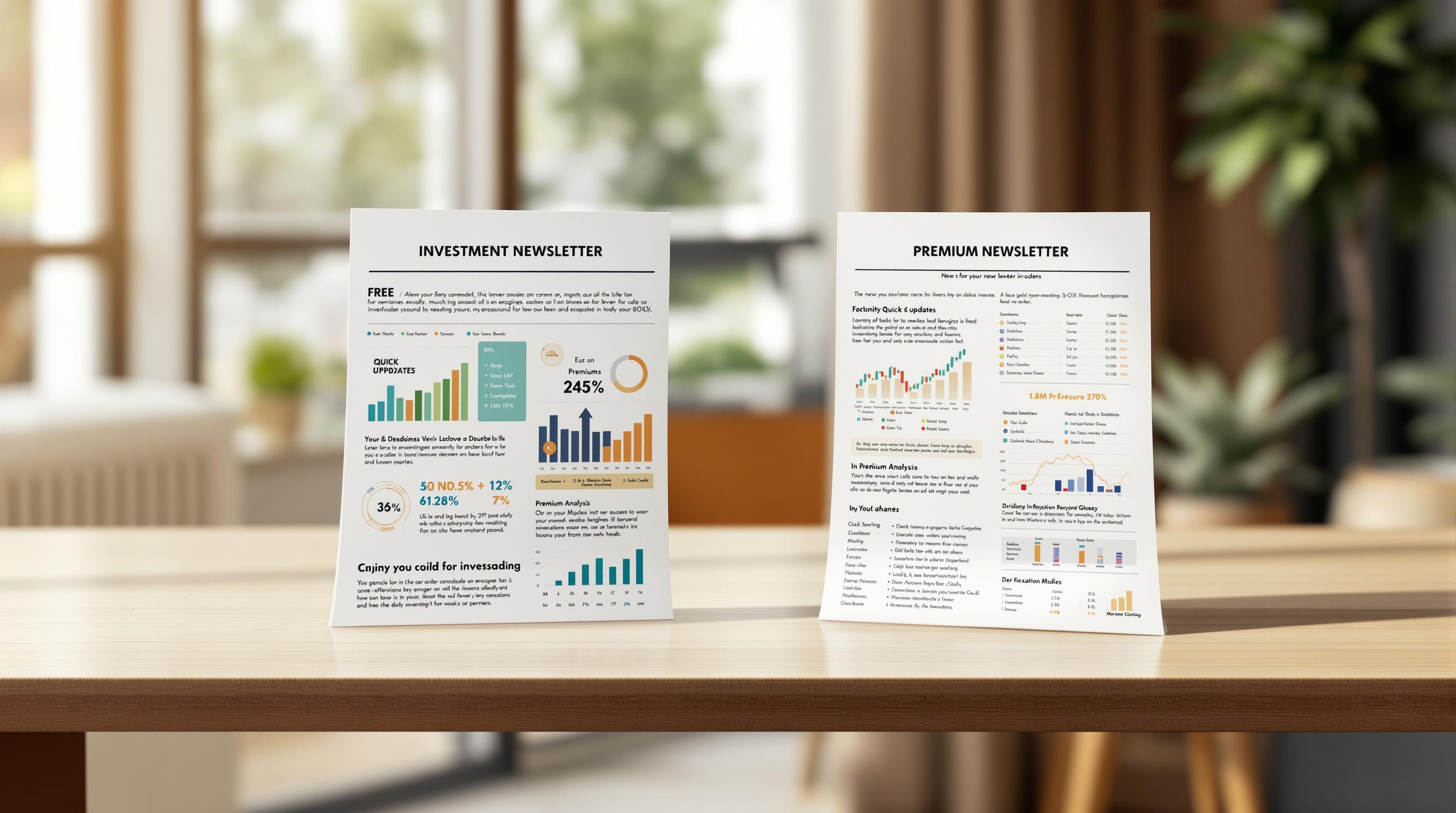MetaTrader and Tradovate are two trading platforms designed for different needs:
- MetaTrader (MT4 & MT5): Best for Forex traders and those seeking advanced technical analysis tools. MT4 focuses on Forex, while MT5 supports multiple asset classes like stocks, futures, and options.
- Tradovate: Ideal for futures traders, offering a modern, cloud-based platform with tools like Depth of Market (DOM), performance tracking, and flexible pricing plans.
Key Differences:
- Markets: MetaTrader supports Forex (MT4) and broader assets (MT5). Tradovate specializes in futures.
- Automation: Both platforms support automated trading, but MetaTrader has a larger marketplace for trading robots.
- Pricing: MetaTrader costs depend on brokers, while Tradovate uses subscription plans (starting at $0/month with fees per trade).
Quick Comparison Table:
| Feature | MetaTrader (MT4/MT5) | Tradovate |
|---|---|---|
| Markets | Forex (MT4), Multi-asset (MT5) | Futures only |
| Platform Type | Desktop-first, mobile apps | Cloud-based, cross-device |
| Pricing | Broker-dependent | Subscription-based |
| Automation | Expert Advisors (EAs) | Supported |
| Target Users | Forex & multi-asset traders | Futures traders |
Choose MetaTrader for Forex and multi-asset trading. Pick Tradovate if you're focused on futures and want a modern, web-based platform.
What Each Platform Does
MetaTrader (MT4/MT5) Basics
MetaTrader is a platform designed primarily for Forex trading, offering a mix of advanced analytics and flexible trading tools suitable for all experience levels.
Here’s what MT4 brings to the table:
- Technical Analysis: Over 65 built-in indicators and tools for detailed market analysis.
- Automated Trading: Support for Expert Advisors (EAs) using the MQL4 programming language.
- Trading Signals: The ability to copy strategies from other successful traders.
- Market Access: Access to the MetaTrader Market, which includes over 1,700 trading robots and 2,100 technical indicators.
The platform also offers mobile apps for iOS and Android, allowing users to manage and execute trades from anywhere.
On the other hand, Tradovate is built specifically for futures trading.
Tradovate Basics

Tradovate is a cloud-based platform tailored for futures traders, designed to work across multiple devices.
Key features include:
- Device Compatibility: Works seamlessly on Windows, Mac, web browsers, and mobile devices.
- Advanced Tools: Includes integrated Depth of Market (DOM), detailed charting, and precise order management tools.
- Risk Management: A simulated trading environment with real-time data for testing strategies.
- Performance Tracking: A dedicated Performance Center to monitor and analyze trading results.
Tradovate offers flexible pricing options, from a free plan to a lifetime membership priced at $1,499. While commission structures vary by plan, fees for exchange, clearing, and NFA remain the same across all tiers.
The platform’s integration with TradingView enhances its analytical features without sacrificing ease of use. Its modern design also ensures reliable trade execution through high-performance exchange connections, making it a strong choice for futures traders.
Feature Comparison
Trading Tools
MetaTrader platforms are well-known for their technical analysis capabilities. MT4 includes three chart types, nine timeframes, 24 analytical tools, and 30 built-in indicators. MT5 goes further by adding more timeframes, additional indicators, and improved graphics. Both platforms feature advanced charting, real-time data, and essential risk management tools. For automation, MetaTrader supports Expert Advisors (EAs) using its MQL4/MQL5 programming language. Tradovate also supports automation, making it another option for traders looking to streamline their strategies.
Available Markets
The range of markets accessible through these platforms is a key difference. MetaTrader 4 focuses on Forex trading, while MetaTrader 5 broadens its scope to include Forex, stocks, bonds, futures, and options. Tradovate, on the other hand, specializes exclusively in futures trading.
| Market Type | MetaTrader 4 | MetaTrader 5 | Tradovate |
|---|---|---|---|
| Forex | ✓ | ✓ | – |
| Stocks | – | ✓ | – |
| Bonds | – | ✓ | – |
| Futures | – | ✓ | ✓ |
| Options | – | ✓ | – |
Cost Structure
Costs play an important role in shaping the trading experience. With MetaTrader, expenses depend on the broker. Many brokers provide the platform for free, but traders still face costs like spreads, commissions, and account fees. Tradovate, by contrast, uses a subscription-based pricing model. This approach gives traders a clearer view of their trading expenses, which some find easier to manage.
'MT4/MT5 to Tradovate' Trade Copier
sbb-itb-2e26d5a
Ease of Use
Understanding the user interface of each platform is crucial in choosing the right trading tool for your needs.
Using MetaTrader
MetaTrader platforms offer a mix of advanced tools and straightforward usability. MT4 includes features like one-click trading, mobile apps for Android and iOS, customizable chart templates, and copy trading systems that let you learn directly from real trades.
MT5, while similar in layout to MT4, allows experienced MT4 users to switch over with minimal hassle. Experts suggest that transitioning to MT5 usually takes just a few hours. However, its upgraded settings and new features might require a short adjustment period.
MetaTrader's design is particularly suited for Forex traders, while Tradovate focuses on futures trading with a more tailored approach.
Using Tradovate
Tradovate takes a modern, cloud-based approach, prioritizing simplicity. Its interface is clean and avoids unnecessary clutter while still offering essential tools. Being web-based, it provides instant access through browsers and apps, eliminating the need for complex installations.
| Usability Aspect | MetaTrader | Tradovate |
|---|---|---|
| Interface Type | Desktop-first with mobile options | Cloud-based, works across devices |
| Learning Curve | Gradual due to numerous features | Streamlined, futures-focused |
| Mobile Access | Dedicated apps for mobile | Cloud-native, accessible on any device |
| Setup Process | Requires installation | Accessible instantly via the web |
| Target User | All experience levels, Forex-focused | Primarily futures traders |
Best Uses for Each Platform
When to Choose MetaTrader
MetaTrader is a strong choice for Forex trading and technical analysis. It offers a wide range of tools for market analysis and supports automated trading through its Expert Advisors (EAs). The platform also boasts a large marketplace with trading robots and technical indicators, making it a great option for traders who lean on automation and detailed analysis. Additionally, the built-in strategy tester allows for backtesting automated systems, which is especially useful for algorithmic traders.
For those focused on futures trading, however, Tradovate provides tools and pricing models better suited to their needs.
When to Choose Tradovate
Tradovate is designed for futures traders who prefer a modern, cloud-based platform. It includes over 40 advanced tools specifically optimized for futures trading. The platform also offers flexible pricing options:
- Free plan: $1.29 per side standard
- Monthly plan ($99/month): $0.99 per side standard
- Lifetime plan ($1,499 one-time): $0.59 per side standard
Tradovate ensures fast and reliable execution for futures trades, with transparent pricing and prompt order handling.
Here’s a quick comparison to help match your trading needs with the right platform:
| Trading Need | Best Platform | Advantage |
|---|---|---|
| Forex Trading | MetaTrader | Wide range of analysis tools |
| Automated Trading | MetaTrader | Strong Expert Advisor support |
| Futures Trading | Tradovate | Tools tailored for futures |
| Cloud Access | Tradovate | Fully web-based platform |
| Technical Analysis | MetaTrader | Advanced indicator options |
Quick Comparison Table
Here’s a summary of MetaTrader's features alongside Tradovate details, offering a snapshot of their capabilities:
| Feature | MetaTrader | Tradovate |
|---|---|---|
| Platform Versions | MT4 and MT5 available | Not specified |
| Market Access | MT4: Primarily Forex; MT5: Forex, Futures, Options, Stocks, Bonds | Not specified |
| Technical Analysis Tools | MT4: 30 indicators, 31 graphical objects; MT5: 38 indicators, 44 graphical objects | Not specified |
| Order Types | MT4: 4 pending order types; MT5: 6 pending order types | Not specified |
| Trading Symbols | MT4: Up to 1,024; MT5: Unlimited | Not specified |
| Timeframes Available | MT4: 9 timeframes; MT5: 21 timeframes | Not specified |
| Strategy Testing | MT4: Single-thread testing; MT5: Multi-threaded, multi-currency testing with real tick data | Not specified |
| Market Depth | MT4: Basic market depth; MT5: Time & Sales data with Depth of Market | Not specified |
This table emphasizes the broader functionality of MT5 when compared to MT4, highlighting their key distinctions.
Conclusion
To wrap up, the differences between MT4 and MT5 become clear when aligned with specific trading needs. Your choice largely depends on your experience level and the markets you aim to trade. MT4 is a solid pick for beginners and those focused on Forex, while MT5 is better suited for advanced traders with multi-asset strategies.
MT4 stands out for:
- A streamlined interface that's easy to navigate
- Reliable tools tailored to Forex trading
- A well-established user community
- Consistent performance and stability
MT5 offers benefits like:
- Support for trading multiple asset classes beyond Forex
- Tools for advanced algorithmic trading
- More detailed backtesting functions
- Improved options for managing positions
In short, MT4 is a trusted choice for Forex traders looking for simplicity and reliability. On the other hand, MT5 provides more advanced tools and broader market access, making it ideal for experienced traders willing to tackle a steeper learning curve.



